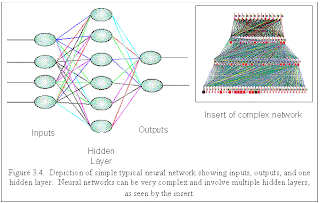 The significance of dendrites, neuronal processes, so far thought of only as 'passive components' in the brain circuitry are now being discovered anew. It was known that dendrites could be depolarized to form generator potentials (normally the inside of a cell is negative with respect to the outside. This potential difference or gap in cell voltage, is decreased when a generator potential is established), but it was later found out that they could also produce action potentials (this means that the voltage change was not restricted locally, it spread to other parts of the cell). It was thought that dendrites merely added the multiple inputs algebraically, that is, it acted like an integrator in an electronic circuit. But it was discovered that they were also capable of modifying the signals in a number of ways and they were not just extensions of the soma (cell body of the neuron) so that dendrites only contributed more surface area that were available for integration or synapse formation.
The significance of dendrites, neuronal processes, so far thought of only as 'passive components' in the brain circuitry are now being discovered anew. It was known that dendrites could be depolarized to form generator potentials (normally the inside of a cell is negative with respect to the outside. This potential difference or gap in cell voltage, is decreased when a generator potential is established), but it was later found out that they could also produce action potentials (this means that the voltage change was not restricted locally, it spread to other parts of the cell). It was thought that dendrites merely added the multiple inputs algebraically, that is, it acted like an integrator in an electronic circuit. But it was discovered that they were also capable of modifying the signals in a number of ways and they were not just extensions of the soma (cell body of the neuron) so that dendrites only contributed more surface area that were available for integration or synapse formation.It is now known that dendrites play a very vital role in memory formation and maintenance in addition to its possible role in producing consciousness. Dendrites have tiny knob-like processes on their membranes called dendritic spines. The number and the thickness of these spines vary with age and in disease. For example, in Down's syndrome (or trisomy 21) the spines are thin and small. Their shapes and sizes change in a matter of minutes to hours. They also produce proteins using mRNAs that had migrated from the soma. These mRNAs latch onto ribosomes situated on the dendritic spines and produce proteins. These proteins modify the effects of the input of glutamatergic (glutaminergic) neurons on them. This alters NMDA and AMPA receptor activities. Long term potentiation (LTP) and thus learning is affected by the rearrangement of these spines.
No comments:
Post a Comment